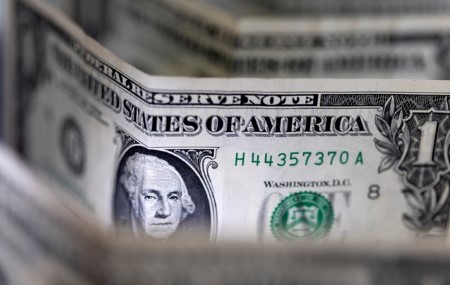




Quarterly Economic Growth Release: More BSP cuts to come
 DOWNLOAD
DOWNLOAD

Monthly Economic Update: Fed catches up
 DOWNLOAD
DOWNLOAD

Inflation Update: Steady and mellow
 DOWNLOAD
DOWNLOAD


US yields climb to multi-week peaks after modest rise in June inflation

NEW YORK – US Treasury yields rose on Tuesday, with 30-year yields hitting six-week highs after data showed inflation increased in June, suggesting the Federal Reserve will likely remain cautious in cutting interest rates this year.
The benchmark 10-year yield gained 6.4 basis points (bps) to 4.487%, rising for four straight days. It earlier hit a high of 4.491%, its strongest level since June 11.
The 30-year yield hit a six-week peak of 5.022%, and was last up 4.5 bps at 5.018%. The 5% yield was a key technical level and when that was hit, it opened further selling in 30-year bonds that pushed yields higher, analysts said.
US two-year yields, which track interest rate expectations, also increased on the day, touching 3.963%, the highest since June 20. They were last up 5.6 bps at 3.957%.
Tuesday’s data showed the Consumer Price Index (CPI) increased 0.3% last month after edging up 0.1% in May. June’s gain was the largest since January. In the 12 months through June, the CPI climbed 2.7% after rising 2.4% in May.
Economists polled by Reuters had forecast that the CPI would climb 0.3% and increase 2.6% on a year-over-year basis.
Excluding the volatile food and energy components, the CPI rose 0.2% in June after edging up 0.1% in the prior month. In the 12 months through June, core CPI inflation increased 2.9% after rising 2.8% for three straight months.
“Fed Chairman (Jerome) Powell has been pretty adamant about a couple things, including the fact that inflation is coming. It might not have shown up materially in this report,” said Jim Barnes, director of fixed income at Bryn Mawr Trust in Berwyn, Pennsylvania.
“They have to get through this summer in order to see where higher prices — what part of the product chain — are going to come from….You’ll get more clarity as to what the rate cut situation is going to be this year.”
Fed funds futures, which are tied to monetary policy, have priced in about 44 bps of easing by the end of the year, or less than two 25 bps of rate cuts each, according to LSEG estimates.
Traders also factored in that the Fed would likely cut rates at the October policy meeting with a roughly 79% probability. The September odds of a rate decline went down to about 53% from as high as 80% a few weeks ago.
“Despite a firmer core CPI print in June relative to May, we believe Federal Reserve officials will welcome this report: higher tariff-related goods inflation justifies their more cautious stance, while continued disinflation across services categories should support rate cuts in September and beyond,” wrote PIMCO economist Tiffany Wilding in emailed comments.
In other parts of the bond market, US breakeven inflation, which represents the difference between the yield on nominal Treasuries and the yield on Treasury Inflation-Protected Securities (TIPS) of the same maturity, rose across the board.
Breakevens reflect the market’s expected average inflation rate over the period until the securities mature.
Data showed that the US five-year breakeven inflation hit 2.501% on Tuesday following the CPI data, the highest since late March, while 10-year breakevens climbed to 2.411%, the highest since February.
Near-term breakevens such as those on the one-year and two-year sectors, also gained, hitting multi-week peaks.
The yield curve, meanwhile, marginally steepened on the day, with the spread between two-year and 10-year yields at 53.2 bps, from 53.1 bps late on Monday. The curve flattened to 44.5 bps following the CPI data, which reflected expectations that the Fed won’t be in a rush to cut interest rates.
(Reporting by Gertrude Chavez-Dreyfuss; Editing by Chizu Nomiyama, Franklin Paul, Susan Fenton, and Cynthia Osterman)
This article originally appeared on reuters.com





 By Reuters
By Reuters